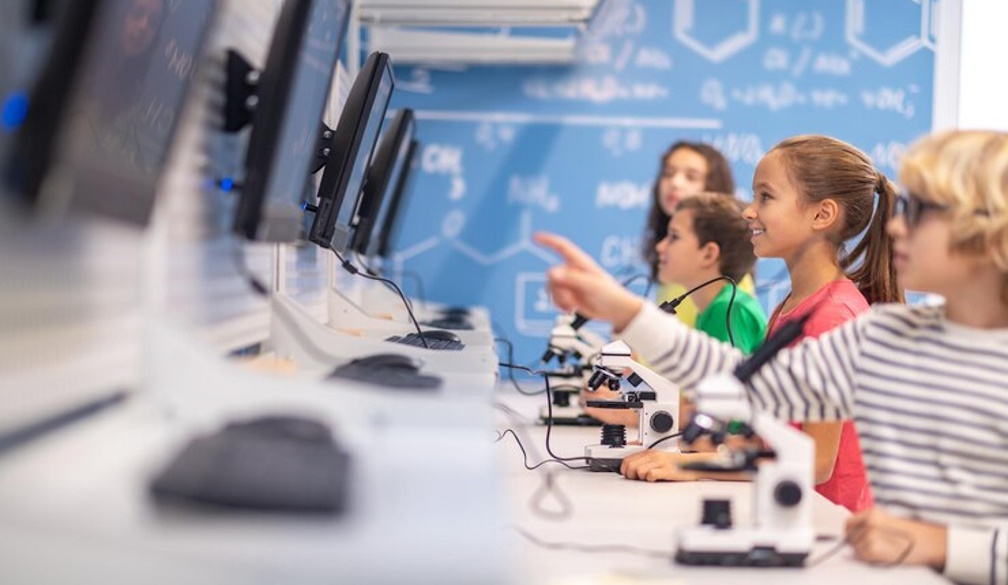Technology and Faith: How Christian Schools Balance Modern Education

In today's rapidly advancing technological landscape, educational institutions, including Christian schools, are consistently at a crossroads between modern educational practices and faith-based teachings. The challenge lies not only in integrating cutting-edge technology into the curriculum but also in ensuring that these technological advancements harmonize with religious values and teachings. This exploration delves into how Christian schools balance these two critical elements, ensuring that students are well-equipped for the digital age while remaining grounded in their faith.
Introduction to the Intersection of Technology and Faith
The integration of technology in education has been transformative across all types of institutions, including those rooted in religious education. Christian schools, particularly, face the unique task of melding tradition with transformative digital trends. This integration involves not merely the adoption of new tools but also a robust strategy to ensure these technologies foster an environment that reflects Christian values.
At the heart of Christian education is the mission to develop a complete person — one who is academically sound, morally upright, and spiritually informed. The introduction of technology into this equation adds a layer of complexity. Schools must navigate this landscape by choosing technologies that enhance educational quality without compromising the spiritual ethos that forms the cornerstone of their existence.
Curriculum Development: Weaving Together Technology and Theology
Developing a curriculum that respects both educational standards and religious faith is a critical task for Christian schools. It requires a deliberate synthesis of course content that supports both academic achievement and spiritual growth. For instance, while science classes are enhanced with digital simulations and virtual labs, religious studies can leverage multimedia resources to bring biblical histories to life.
This dual-focus curriculum ensures that students receive a well-rounded education that makes them not only market-ready but also spiritually aware. Technology, in this respect, is not seen as a mere add-on but as an integral part of the holistic development of students. It's about creating a learning environment where technology serves both pedagogical and theological purposes, helping students to excel academically and grow in their faith.
Digital Tools: Enhancements in Learning and Faith Formation
The use of digital tools in Christian education extends beyond conventional educational technologies. It includes platforms and applications that foster interaction, collaboration, and spiritual engagement. For example, online forums and virtual prayer rooms facilitate community building and spiritual discussions among students, reinforcing the communal aspect of faith that is essential in Christian teachings.
Further, digital tools such as Bible study apps, religious podcasts, and sermon archives make religious content more accessible, enabling students to integrate their faith practice with their daily lives seamlessly. These technologies not only support traditional learning outcomes but also enhance the spiritual journey of students, making religion a constant rather than a scheduled part of their education.
Ethical Considerations in Technology Use
Amidst the enthusiasm for technological integration, Christian schools face the critical challenge of addressing the ethical implications that come with digital media and tools. This concerns not just the content and access but also the broader impact of technology on students' morality and behaviour. The potential for distraction, misuse, and even moral decay poses significant concerns.
Christian schools, therefore, put in place robust policies that govern the use of technology within their premises. This includes restrictions on inappropriate content, guidelines on ethical internet use, and education about digital footprints and privacy. By doing so, these institutions ensure that technology acts as a bridge rather than a barrier to moral and spiritual development.
Case Study
An exemplary case of balancing technology and faith can be seen at The King's College in Western Australia. The school embraces technological advancements to enhance educational delivery while ensuring these tools are rooted in Christian values. The integration of iPads and interactive whiteboards in classrooms has been complemented with content filters and monitoring strategies to maintain a safe, faith-conducive learning environment.
They also prioritize staff training in the use of technology, ensuring that educators are not only tech-savvy but also adept at using these tools to promote faith-based education. It's a prime example of how technology, when aligned with institutional faith goals, can be harnessed to foster an enriched, engaging, and ethical educational experience.
Future Prospects: Sustaining Balance in the Technological Era
Looking forward, the challenge for Christian schools is not just in adopting new technologies but in continuously aligning these advancements with Christian doctrine and moral teachings. As digital landscapes evolve, so too must the strategies employed by these institutions to integrate technology in ways that enhance both education and faith.
The future will likely hold more personalised learning experiences enabled by AI, perhaps even VR environments for immersive religious experiences. As these technologies take hold, Christian schools must remain vigilant and proactive, ensuring that their use of technology continues to promote a comprehensive education that serves academic, moral, and spiritual needs.
In conclusion, the relationship between technology and faith in Christian education is complex yet navigable. With thoughtful integration, robust ethical frameworks, and a clear vision for the future, Christian schools can harness the vast potential of modern technology to enhance educational delivery while staying true to their religious foundations.









